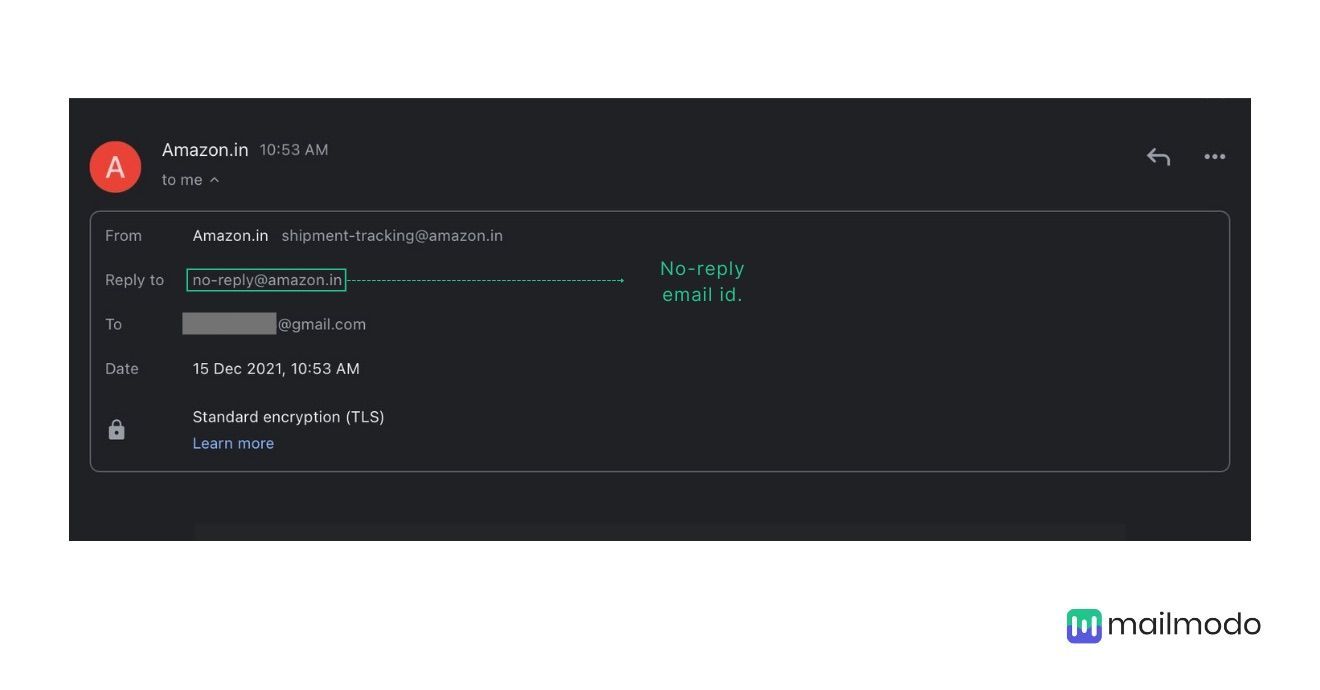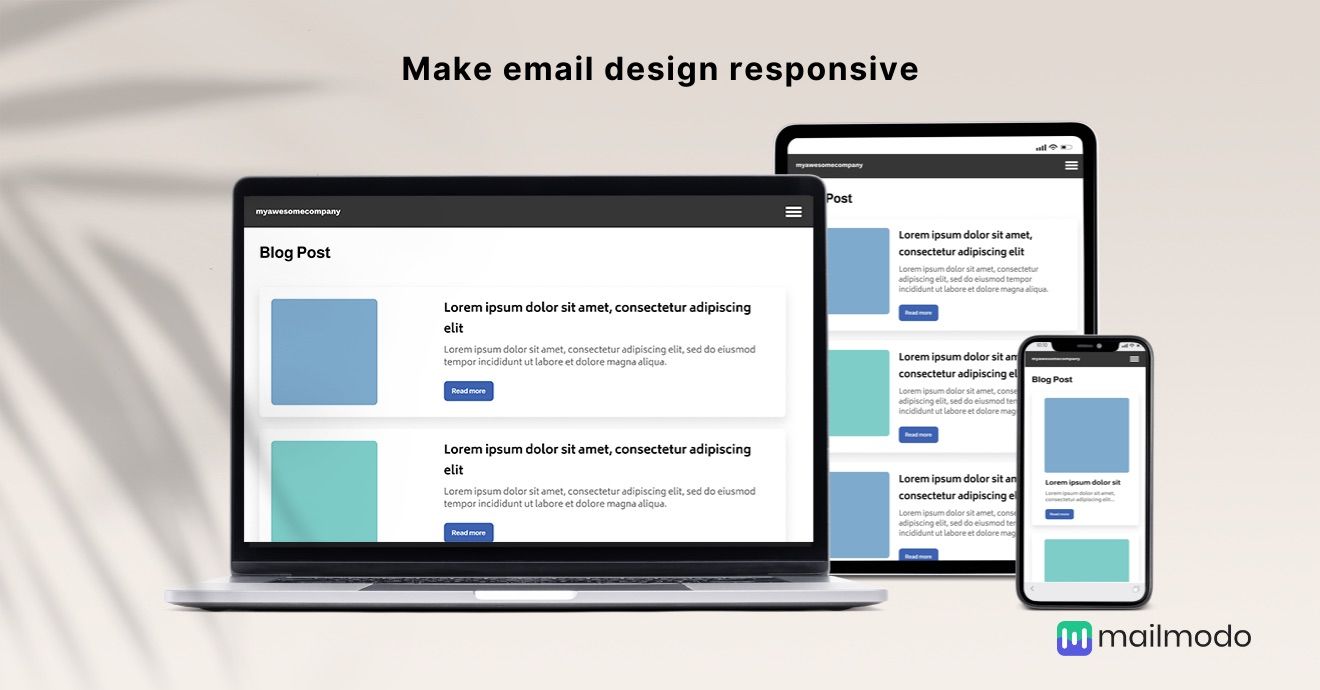Mistakes are not that bad; everyone makes them. And that's ok; we are only human after all. But, what's not ok is making the same mistake twice.
As an email marketer, you might be making several mistakes in your marketing journey, and it's ok as long as you diagnose it and do not repeat the same mistake.
This guide will discuss some common mistakes in email marketing that you might be making. And, we will tell you what you can do to avoid them in the future.
1. Not making your emails accessible
Email accessibility is the process of ensuring that people with disabilities can read and understand the content of the emails you create.
One of the main reasons people use email marketing is to connect with their audience and build trust. And when your emails are not accessible, it means that people with reading disabilities will not be able to decipher the message in your email.
So, how can you connect with your audience if they can't understand you? Make your emails accessible by implementing these suggestions:
Avoid relying heavily on images in your emails.
Use a minimum font size of 16px for the email copy and 18px for the heading.
Make sure there is decent color contrast between the foreground and background colors.
Include an alt text for the images in the emails so that a screen reader can read them.
And there are so many more things you can do to make your emails accessible; check out this guide on Email Accessibility to know more.
2. Not authenticating your sender domain and IP address
Email authentication is a process using multiple methods like SPF, DKIM, DMARC to confirm if a genuine person is sending the email rather than any spammers or spoofers.
So, if you don't authenticate to confirm your identity, you might be perceived as spam, and your emails can be stopped from reaching your subscriber's inbox.
Avoid all the complications by:
Authenticate your sender server with SPF.
Set up DKIM to protect your emails from being tampered with.
Set up DMARC to verify your email and safeguard against email spoofing. But do know that for DMARC to pass, you need to have passed SPF and DKIM.
3. Not warming up your domain
You log in to an email service provider, upload your email list, and send thousands of emails immediately. But, ya, well, email marketing doesn't work like that; it's not a plug-and-play process.
You need to warm up your domain by sending emails to a small group of people and slowly increasing the number every day. Domain warm-up helps you have a good domain reputation which helps in the emails landing in the subscriber's inbox.
4. Not complying with email laws
While it's pretty obvious that not complying with email laws can get you in serious legal trouble, people still don't follow the rules. If you don't comply with email laws, you will have to pay hefty fines. So, here are some guides on the emails laws like CCPA, CPRA, GDPR, PECR, and what you need to do to acknowledge them.
5. Using a no-reply email id
 If you use a no-reply email id, your subscribers can not communicate with you, making them feel like you don't care about their opinion. In addition, it weakens trust between you and your subscribers, which can lead to them not wanting to open your email, let alone read it.
If you use a no-reply email id, your subscribers can not communicate with you, making them feel like you don't care about their opinion. In addition, it weakens trust between you and your subscribers, which can lead to them not wanting to open your email, let alone read it.
Here are some of the alternatives for noreply@domainname.com:
6. Sending bulk email to the entire list without any strategy
When you send email blasts to your entire list without any strategy, most of your audience will likely not be able to relate to such a generic email. They could become annoyed and mark you as spam. Sending bulk amounts of emails can also raise a red flag to spam filters, leading to them categorizing you as spam.
Here's what you need to do to send email blasts the right way:
Divide your list into segments and send them targeted emails.
Make your emails personalized for your audience.
7. Not making your emails responsive for all devices

More people are using mobile devices for checking their emails nowadays, and data shows that if the email design is responsive, it can get 2.7 % to 3.1% more clicks from mobile users.
And if your email is not responsive, your subscriber will have a bad reading experience and will not want to read through your email. So, if they don't read your email, you miss out on engagement and conversions.
So, when you design your email, take some time to test and make sure everything looks good on all devices like PC, tablets, and mobile phones.
8. Not sending welcome emails when they join your email list
Welcome emails are incredibly useful as they help you express gratitude, introduce yourself and your products, and initiate a conversation with your subscribers.
And, if you don't send one, there are chances that people will forget ever signing up for your email list. So, when you send an email to them later on, they might mark it as spam.
And apart from introducing yourself, welcome emails can also help you find incorrect or invalid email addresses in your list. When you send welcome emails, and you get some hard bounces, it means that the emails didn't get delivered to their inboxes because those email addresses don't exist. So, you can remove them from your email list to keep it clean and avoid any potential spam traps.
9. Not sending emails consistently
When you send emails willy-nilly whenever you feel like it, you are missing out on the opportunity to increase brand awareness and engagement.
When you have an email cadence and send emails consistently, you can put thought into it and create something meaningful for your audience. It'll help you connect with your audience and increase your engagement rate.
Also, sending emails at the right time increases the likelihood of your subscribers opening your email, thus improving your metrics.
10. Not segmenting your email list
When you send an email to everyone on your list irrespective of their age, gender, location, etc., it's highly unlikely that it'll be relatable for all of your subscribers.
But, if you segment your audience and create campaigns targeted for those segments, you will better connect with your audience their problems and get more conversions.
11. Not personalizing your emails
Personalization is taking things up a notch and creating an email specifically for certain segments in your list that will be catering to their problems and needs.
Nearly 60% of consumers said they are more likely to buy from a brand when they've had a personalized shopping experience. And things are similar for the email experience. So, check out our guide to find out how you can personalize your emails.
12. Not proofreading your emails before sending them
If you do not proofread your emails, there are chances that there might be spelling and grammar mistakes in your emails that can be easily rectified. There could also be cases where you have added the wrong link in the CTA or a broken link.
So, what should you do:
Take time to go through it and double-check if everything is good to go twice before sending out the emails.
Use tools like Grammarly to check for grammar or punctuation errors in the email copy.
Ask someone else to check it as there could be something you might be missing.
13. Not being inclusive in your emails
If you are being exclusive in your emails, there are chances that people will feel disconnected and even offended by your emails. In addition, it can degrade your brand's credibility and reputation. So, be inclusive in your emails.
Here's a guide to learn how to make your email more inclusive.
14. Not optimizing your subject lines
The subject line is one of the major factors that can influence a subscriber's decision to open your email or not. So, if you write lousy subject lines and do not optimize them, you will miss out on the opportunity to increase open rates and boost ROI.
Here are some ways you can optimize your subject lines:
Make it personalized by adding your subscriber's name in the subject line.
Add a call to action in the subject line.
Use emojis in your emails to spice it up.
For more information on subject lines, check out our guide.
15. Not A/B testing your emails
A/B testing helps you experiment with slightly different versions of the same email to see which performs well with your audience. You need to use A/B testing to determine what's working what's not before sending out your campaigns.
What should you do:
Create variations of an element in your email
Run A/B tests by sending the different versions to different audience subsets.
Analyze the results to see which performed the best.
And that's everything you might be doing wrong.
We hope you were able to diagnose and fix your email marketing mistakes. Also, we addressed some of these mistakes in our State of Email e-book, where we surveyed 250+ email marketers to get their thoughts on email marketing mistakes with ways to overcome them. If you want to know what they said, check out our State of Email 2022 e-book.


